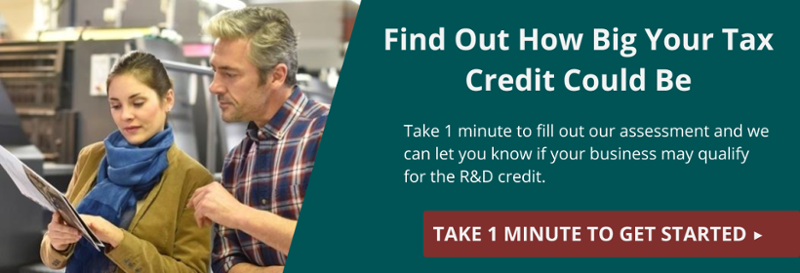 With all its variables and potential problem areas, the quoting process is almost always a challenge for manufacturers. We get it - we've been there before.
With all its variables and potential problem areas, the quoting process is almost always a challenge for manufacturers. We get it - we've been there before.
"If you're lucky, 15% of the projects you quote actually turn into work," says John Madsen, VP and Manufacturing Practice Leader of Black Line Group. But all those headaches don't have to be for naught. Even if you don't get the job, the quoting process may qualify for the R&D Tax Credit. So, depending on the nature of your quoting process and who's involved, you may be able to turn those challenges into valuable R&D Tax Credits:
Quoting is Complex
When quoting a customer’s part, a team evaluates the various alternatives and tries to reduce any uncertainty surrounding production costs. They take into account a litany of factors including the size of the product, tolerances required, volume, material types, any plating or paint applied to the product, and finally, packaging to prevent damage when shipped to the end customer. Needless to say, it's a tall order.
During the quoting process, a manufacturer determines exactly how they will produce the finished product. Based on the size and shape of the customer's requirements, they may consider a laser as the first choice for correct process. But due to volume and tolerance, tooling may be needed to increase the production parts per hour for a cost competitive quote. This type of qualifying activity is all part of the experimentation process that often meets R&D Tax Credit requirements.
It’s Time to Quote
If you're working with a new customer, and you've already gone through the design process (which may also qualify for R&D Tax Credits), it’s time to quote. There are generally three models most manufacturers use to determine price:
- Sales department-driven — In this situation, the salesperson, sales engineer, or both will determine the price.
- Estimating department-driven — In cases like these, the sales department hands the design to the estimating department to determine the price.
- Cross-functional team-driven — This model involves individuals from a number of departments and is typically used when an order is over a certain dollar threshold, is high-volume, or is particularly complex or risky. In certain situations, a prototype will be developed to confirm pricing hypothesis based on real data.
Whose Activities Qualify as R&D?
Regardless of the model your company uses to generate quotes, you're likely in a position to take advantage of R&D Tax Credits. So, who exactly meets the requirements?
Well, unless you're updating existing quotes due to changes in material cost, any individuals participating in quoting activities likely qualify for the R&D Tax Credit. That includes any immediate supervisor or manager overseeing the process, as well. If the intent is to develop or improve a product or process for performance, reduce cost, or improve quality due to a customer’s rejection or reliability requirements, the activities likely qualify for the credit.
Improve Your Quoting Process
No company's quoting process is perfect, and there’s usually a big opportunity to improve your accuracy and win rate. So, why not take a portion of your R&D Tax Credit and reinvest it back into your business? Consider the advantages of adding more quoting staff, increasing automation, or improving processes. Only you can judge the potential benefit to your business. But if you aren't taking advantage of all the available R&D incentives, you may not have the opportunity.





